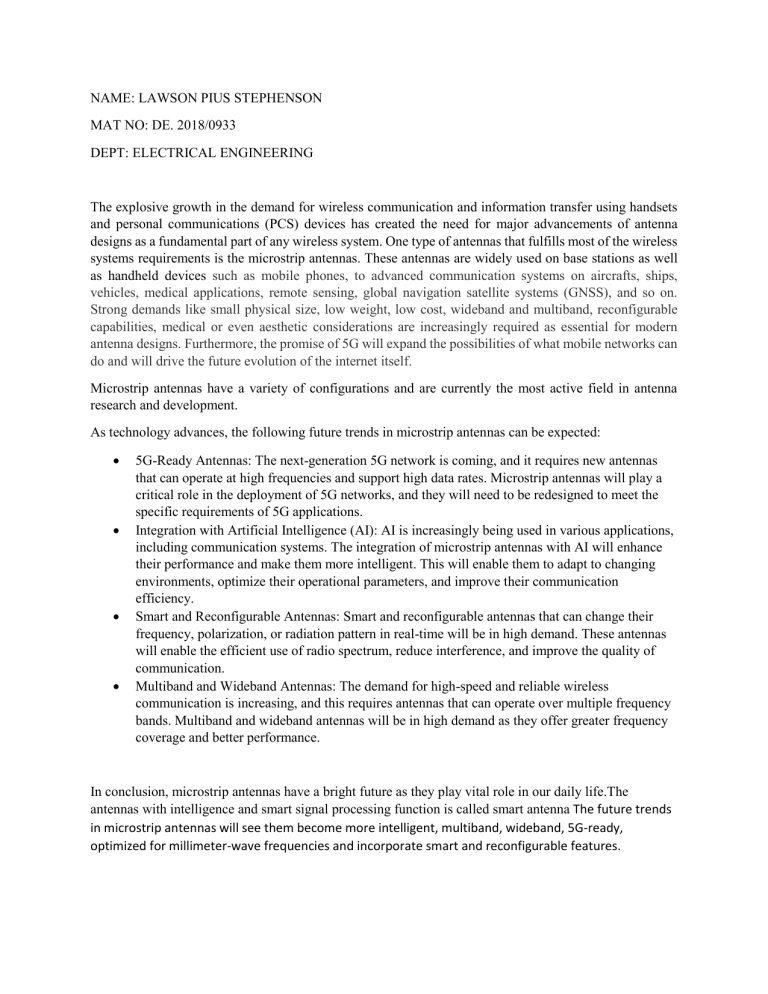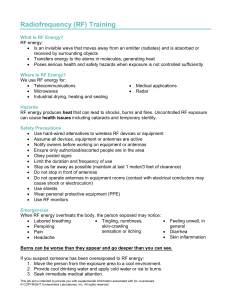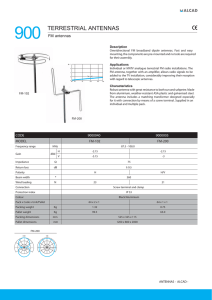
NAME: LAWSON PIUS STEPHENSON MAT NO: DE. 2018/0933 DEPT: ELECTRICAL ENGINEERING The explosive growth in the demand for wireless communication and information transfer using handsets and personal communications (PCS) devices has created the need for major advancements of antenna designs as a fundamental part of any wireless system. One type of antennas that fulfills most of the wireless systems requirements is the microstrip antennas. These antennas are widely used on base stations as well as handheld devices such as mobile phones, to advanced communication systems on aircrafts, ships, vehicles, medical applications, remote sensing, global navigation satellite systems (GNSS), and so on. Strong demands like small physical size, low weight, low cost, wideband and multiband, reconfigurable capabilities, medical or even aesthetic considerations are increasingly required as essential for modern antenna designs. Furthermore, the promise of 5G will expand the possibilities of what mobile networks can do and will drive the future evolution of the internet itself. Microstrip antennas have a variety of configurations and are currently the most active field in antenna research and development. As technology advances, the following future trends in microstrip antennas can be expected: 5G-Ready Antennas: The next-generation 5G network is coming, and it requires new antennas that can operate at high frequencies and support high data rates. Microstrip antennas will play a critical role in the deployment of 5G networks, and they will need to be redesigned to meet the specific requirements of 5G applications. Integration with Artificial Intelligence (AI): AI is increasingly being used in various applications, including communication systems. The integration of microstrip antennas with AI will enhance their performance and make them more intelligent. This will enable them to adapt to changing environments, optimize their operational parameters, and improve their communication efficiency. Smart and Reconfigurable Antennas: Smart and reconfigurable antennas that can change their frequency, polarization, or radiation pattern in real-time will be in high demand. These antennas will enable the efficient use of radio spectrum, reduce interference, and improve the quality of communication. Multiband and Wideband Antennas: The demand for high-speed and reliable wireless communication is increasing, and this requires antennas that can operate over multiple frequency bands. Multiband and wideband antennas will be in high demand as they offer greater frequency coverage and better performance. In conclusion, microstrip antennas have a bright future as they play vital role in our daily life.The antennas with intelligence and smart signal processing function is called smart antenna The future trends in microstrip antennas will see them become more intelligent, multiband, wideband, 5G-ready, optimized for millimeter-wave frequencies and incorporate smart and reconfigurable features.


